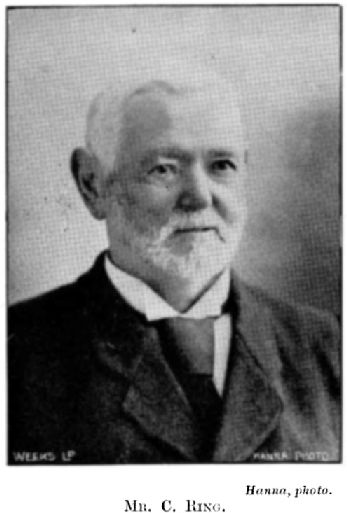
Gold Discovery in Coromandel
In 1852, leading businessmen from Auckland offered a bounty of £500 to anyone who found a payable goldfield in Auckland Province, of which Coromandel was a part. The businessmen were frustrated with the exodus of the local workforce to Australian goldfields. The hunt was on!!
The first recorded discovery of gold in Aotearoa New Zealand was in Kapanga, Coromandel, in October 1852. Returning from the California goldfields, Charles Ring and his brother Frederick reported the discovery of a few small golden flakes while panning in a stream called Driving Creek. Charles and Frederick did receive the gold bounty some years later, but at a reduced amount of £200. Charles’ son Francis, or Frank as he was known, became a well-known sheep farmer in Kūaotunu and is the namesake for Ring’s Beach. The homestead that was built for Charles still stands today in Ring’s Road, Coromandel. Charles died in Auckland in 1906. It is said that he was rather disappointed by the government’s non-recognition of his gold discovery being the first in Aotearoa.
By late 1852, an agreement to open land for mining was formed by Charles with local chiefs, including Horeta Te Taniwha, and the first Aotearoa New Zealand gold rush was on! A reported 300 miners raced to work the alluvium gold in the area. However, the following year, only 13 miners were still working in the area, and less than £1,200 worth of gold had been discovered.
A second gold rush happened in 1861, when a gold-bearing quartz reef was discovered in Kapanga, Coromandel and once again the district was buzzing with miners.
Quartz reef gold took a little more capital and greater expertise to mine. Once the reef had been discovered and the quartz rock brought out of the forests – the ore had to be crushed to remove the precious metal. Stamper batteries were then erected on the Peninsula. Eventually three centres were set up in the Mercury Bay area at Kuaotunu, Opitonui and Kapowai.

In the late 1800s, a large reef was discovered by Lanigan and McIsaac in the Opitonui Valley, inland from Whangapoua. Not long after, the Kauri Freehold Gold Estates Ltd, a subsidiary of the Kauri Timber Company, took over the whole area and started an active prospecting programme. Over four years, they created shafts, installed pumping plants, and erected a stamper battery at Te Rerenga. A tramway was also laid to link the mining sites in the Whangapoua area with the harbour. Gold recoveries from the battery proved disappointing however, and eventually became unprofitable leading to the company ceasing its activity in 1903.
No further mining was attempted in the valley until 1937, when the Opitonui Consolidated Gold mining Company built a new five-stamp battery and cyanide plant at Opitonui. They processed 350 tons of ore for a return of just 130 ounces of bullion and gave up shortly after that in 1939.
Opitonui was not resource rich and most of the payable rock was in small shoots of the main mines and not to any great depth.
Today, apart from some removal of buildings and machinery, and the planting of pine trees in the 1960s, the mining area has remained much as it was. The Opitonui Road and No. 30 forestry road follow the old tramway route up the Opitonui Valley. In some parts of the old mining area, the track which connected the mines leading to the Te Rerenga Battery and on to Whangapoua can be traced and recognised. The Kauri Freehold Gold Estate’s battery site is now a small reserve at Te Rerenga, just south of the junction of Whangapoua Road and SH25.Outside the Mercury Bay Museum is a stamper battery and a berdan (a frame-mounted inclined revolving cast iron basin between 0.6 and 1.25 metres in diameter) from the short-lived Moewai mining site. The Museum also holds further information on the Kauri Freehold Gold Estate Ltd, including title deeds and maps.
The Coromandel School of Mines Museum in Coromandel township also holds valuable information on Charles Ring and the history of the mining industry in the Coromandel area.
Words by Becs Cox – Mercury Bay Museum Manager
Photographs – Courtesy of Mercury Bay Museum





